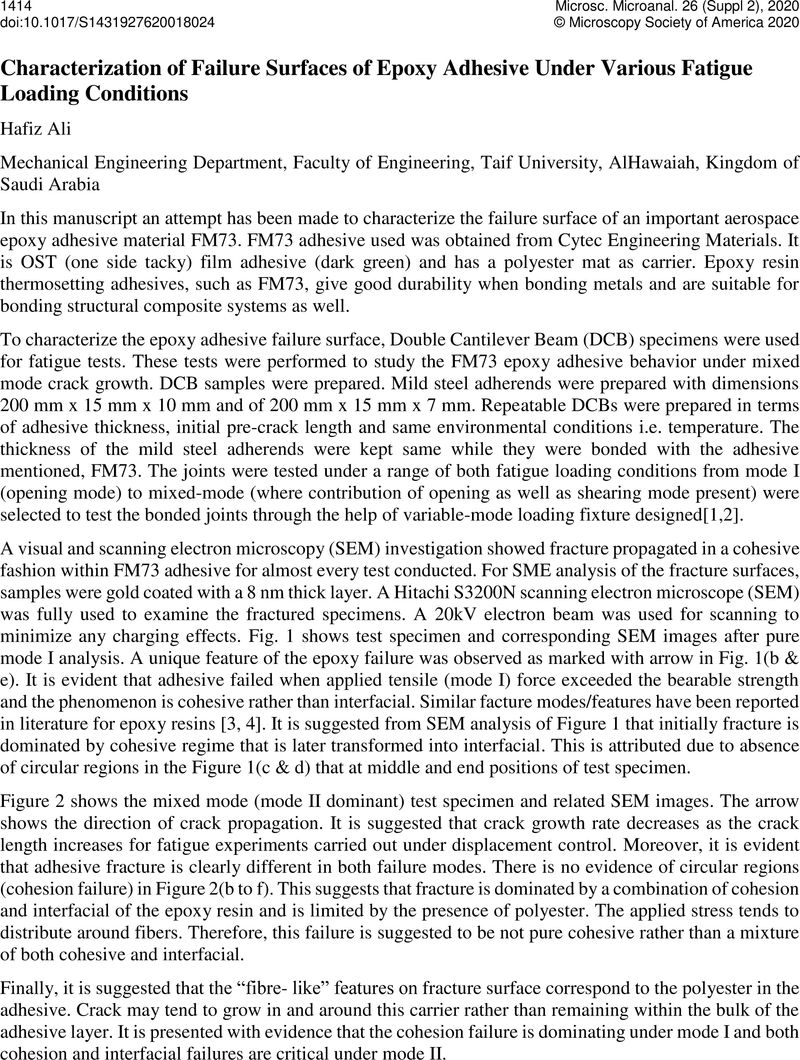No CrossRef data available.
Article contents
Characterization of Failure Surfaces of Epoxy Adhesive Under Various Fatigue Loading Conditions
Published online by Cambridge University Press: 30 July 2020
Abstract
An abstract is not available for this content so a preview has been provided. As you have access to this content, a full PDF is available via the ‘Save PDF’ action button.

- Type
- Advances in Electron Microscopy to Characterize Materials Embedded in Devices
- Information
- Copyright
- Copyright © Microscopy Society of America 2020
References
Hafiz, H.T., Wahab, M.M., Crocombe, A.D., and Smith, P.A., Mixed-mode fatigue crack growth in FM73 bonded joints : International Journal of Adhesion and Adhesives, 2013. 40: p. 188–19610.1016/j.ijadhadh.2012.07.004CrossRefGoogle Scholar
Hafiz, H.T., Wahab, M.M., Crocombe, A.D., and Smith, P.A., Mixed-mode fracture of adhesively bonded metallic joints underquasi-static loading : Engineering Fracture Mechanics, 2010. 77: p. 3434–344510.1016/j.engfracmech.2010.09.015CrossRefGoogle Scholar
Kim, H.B., Naito, K., and Oguma, H., Fatigue crack growth properties of a two-part acrylic-based adhesive in an adhesive bonded joint: Double cantilever-beam tests under Mode I loading. International Journal of Fatigue, 2017. 98: p. 286–295.10.1016/j.ijfatigue.2017.02.008CrossRefGoogle Scholar
Jhin, G., et al. , Crack growth rate and crack path in adhesively bonded joints: Comparison of creep, fatigue and fracture. International Journal of Adhesion and Adhesives, 2013. 46: p. 74–84.10.1016/j.ijadhadh.2013.05.009CrossRefGoogle Scholar





